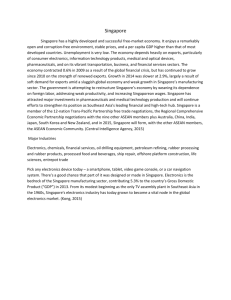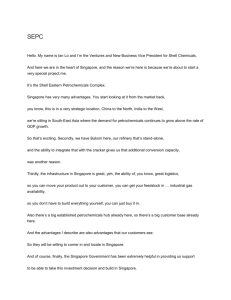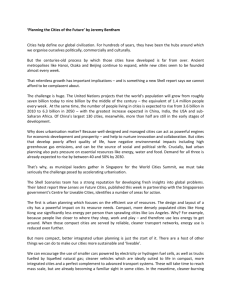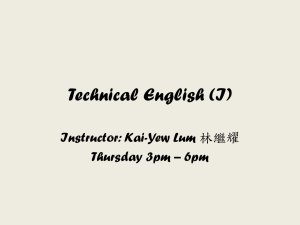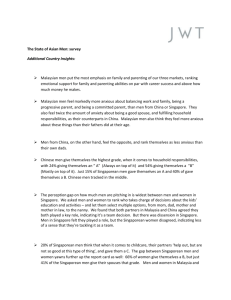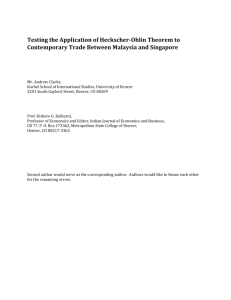Singapore Industry Info - guidetoInternationabusinessproject
advertisement
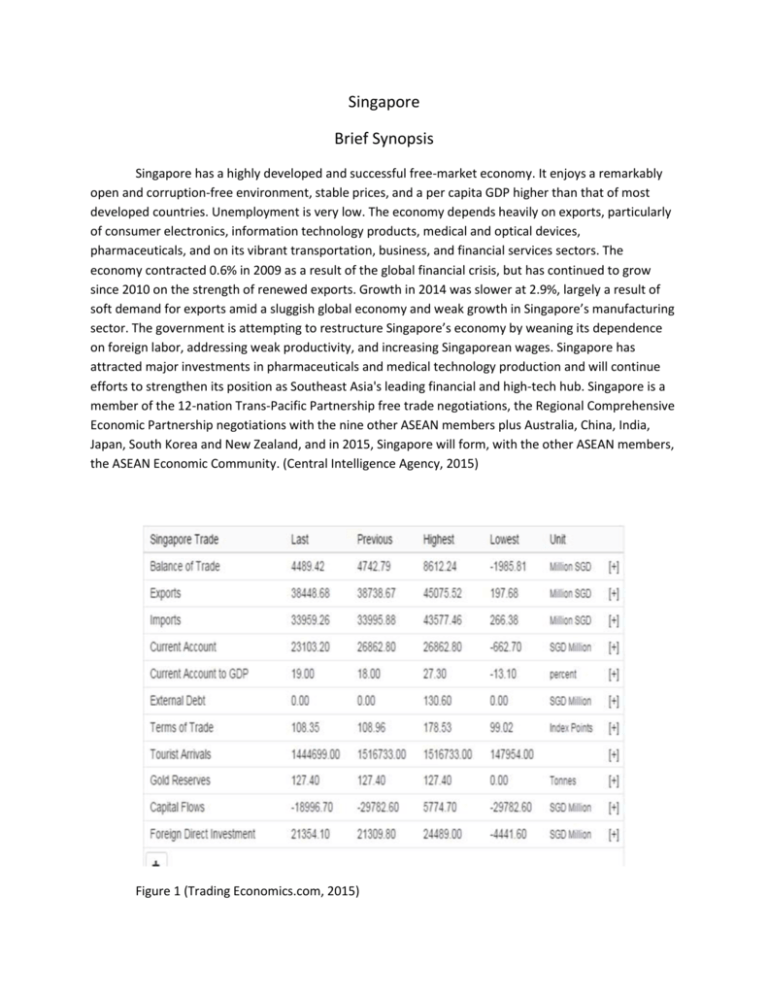
Singapore Brief Synopsis Singapore has a highly developed and successful free-market economy. It enjoys a remarkably open and corruption-free environment, stable prices, and a per capita GDP higher than that of most developed countries. Unemployment is very low. The economy depends heavily on exports, particularly of consumer electronics, information technology products, medical and optical devices, pharmaceuticals, and on its vibrant transportation, business, and financial services sectors. The economy contracted 0.6% in 2009 as a result of the global financial crisis, but has continued to grow since 2010 on the strength of renewed exports. Growth in 2014 was slower at 2.9%, largely a result of soft demand for exports amid a sluggish global economy and weak growth in Singapore’s manufacturing sector. The government is attempting to restructure Singapore’s economy by weaning its dependence on foreign labor, addressing weak productivity, and increasing Singaporean wages. Singapore has attracted major investments in pharmaceuticals and medical technology production and will continue efforts to strengthen its position as Southeast Asia's leading financial and high-tech hub. Singapore is a member of the 12-nation Trans-Pacific Partnership free trade negotiations, the Regional Comprehensive Economic Partnership negotiations with the nine other ASEAN members plus Australia, China, India, Japan, South Korea and New Zealand, and in 2015, Singapore will form, with the other ASEAN members, the ASEAN Economic Community. (Central Intelligence Agency, 2015) Figure 1 (Trading Economics.com, 2015) Major Industries Electronics, chemicals, financial services, oil drilling equipment, petroleum refining, rubber processing and rubber products, processed food and beverages, ship repair, offshore platform construction, life sciences, entrepot trade Imports Pick any electronics device today – a smartphone, tablet, video game console, or a car navigation system. There's a good chance that part of it was designed or made in Singapore. Electronics is the bedrock of the Singapore manufacturing sector, contributing 5.3% to the country’s Gross Domestic Product (“GDP”) in 2013. From its modest beginning as the only TV assembly plant in Southeast Asia in the 1960s, Singapore's electronics industry has today grown to become a vital node in the global electronics market. (Kong, 2015) The biggest import product, with 43 percent share, is machinery and equipment (with electronics accounting for 60 percent). The country also imports: crude oil (32 percent), miscellaneous manufactures (7 percent) and chemical products (7 percent). Main import partners are: China (11 percent), Malaysia (11 percent), the United States (9 percent), South Korea (8 percent), Japan (6 percent) and Indonesia (5 percent). This page provides the latest reported value for - Singapore Imports - plus previous releases, historical high and low, short-term forecast and long-term prediction, economic calendar, survey consensus and news. (Trading Economics.com, 2015) Figure 2 (World's Richest Countries, 2015) Exports Singapore is the 21st largest export economy in the world and the 10th most complex economy according to the Economic Complexity Index (ECI). The following export product groups represent the highest dollar value in Singaporean global shipments during 2014. Also shown is the percentage share each export category represents in terms of overall exports from Singapore. 1. 2. 3. 4. 5. 6. 7. 8. 9. 10. Electronic equipment: US$124.9 billion (30.5% of total exports) Oil: $68.7 billion (16.8%) Machines, engines, pumps: $54 billion (13.2%) Organic chemicals: $18.3 billion (4.5%) Plastics: $16.4 billion (4%) Medical, technical equipment: $15.9 billion (3.9%) Gems, precious metals, coins: $8.2 billion (2%) Pharmaceuticals: $7.1 billion (1.7%) Aircraft, spacecraft: $5.8 billion (1.4%) Books, newspapers, pictures: $5.7 billion (1.4%) Books, newspapers and pictures were the fastest-growing among the top 10 export categories, up 342.3% for the 5-year period starting in 2010. In second place for improving export sales was medical and technical equipment which was up 59.4% led by electro-medical apparatus such as those used for electro-cardiographs and infra-red ray applications. Singaporean plastics posted the third-fastest gain at 43.4%. The only declining category among the top 10 Singaporean exports was machinery which was down by a modest 0.4%. The top export destinations of Singapore are Hong Kong ($32.5B), China ($31.8B), Indonesia ($25.9B), Malaysia ($25.2B) and the United States ($12.7B). The top import origins are China ($42.2B), Malaysia ($37B), the United States ($30.9B), Other Asia ($26.6B) and South Korea ($24.8B). (World's Top Exports, 2015)
